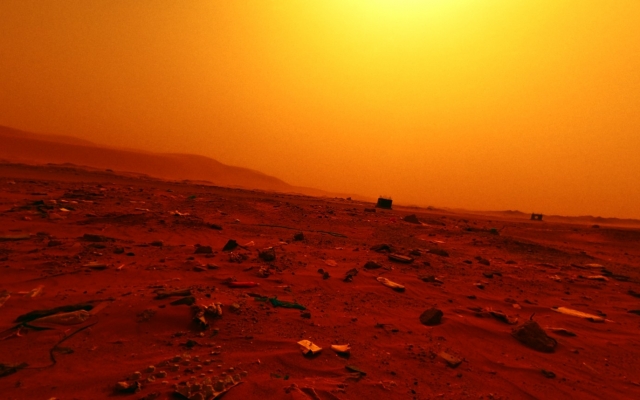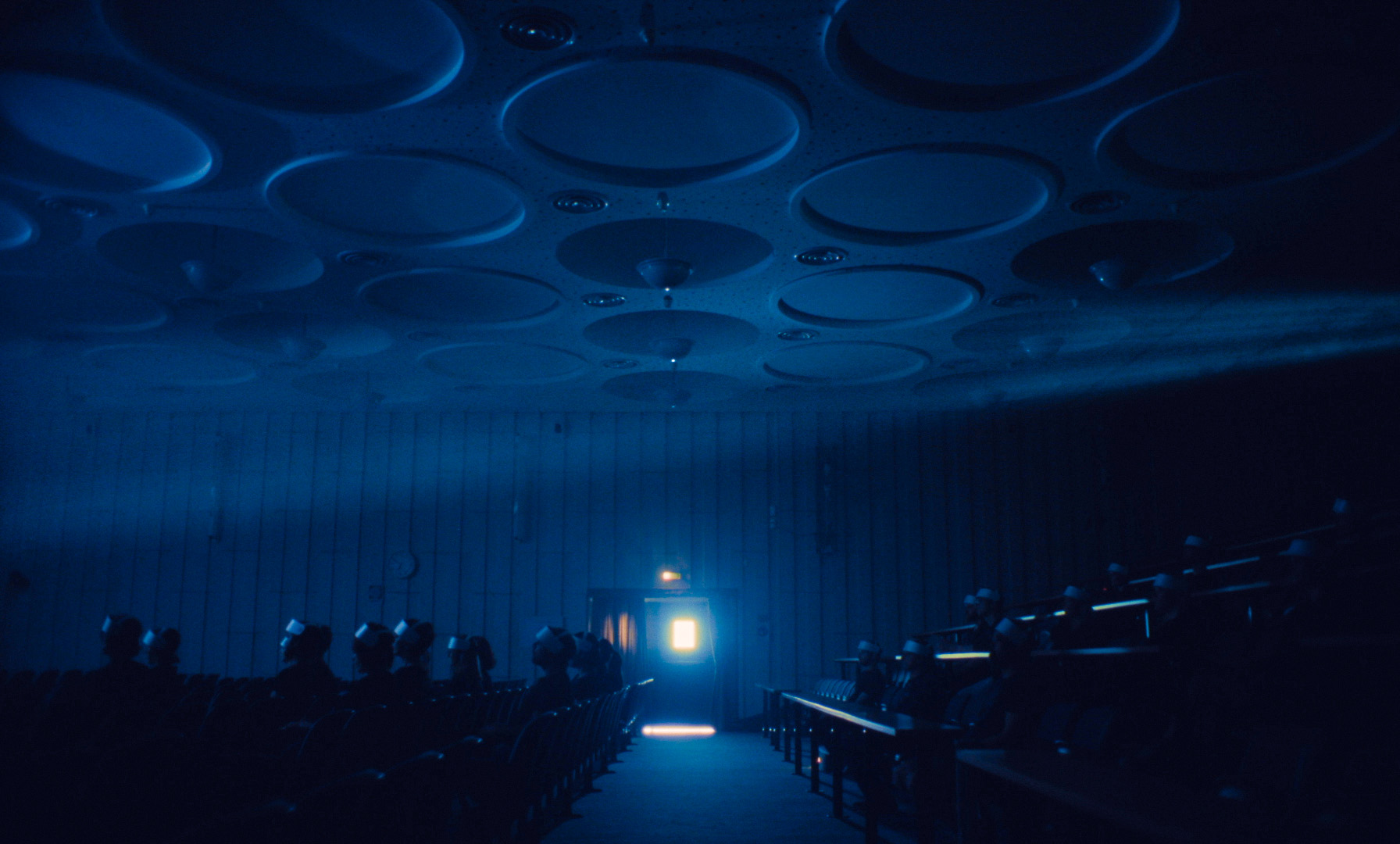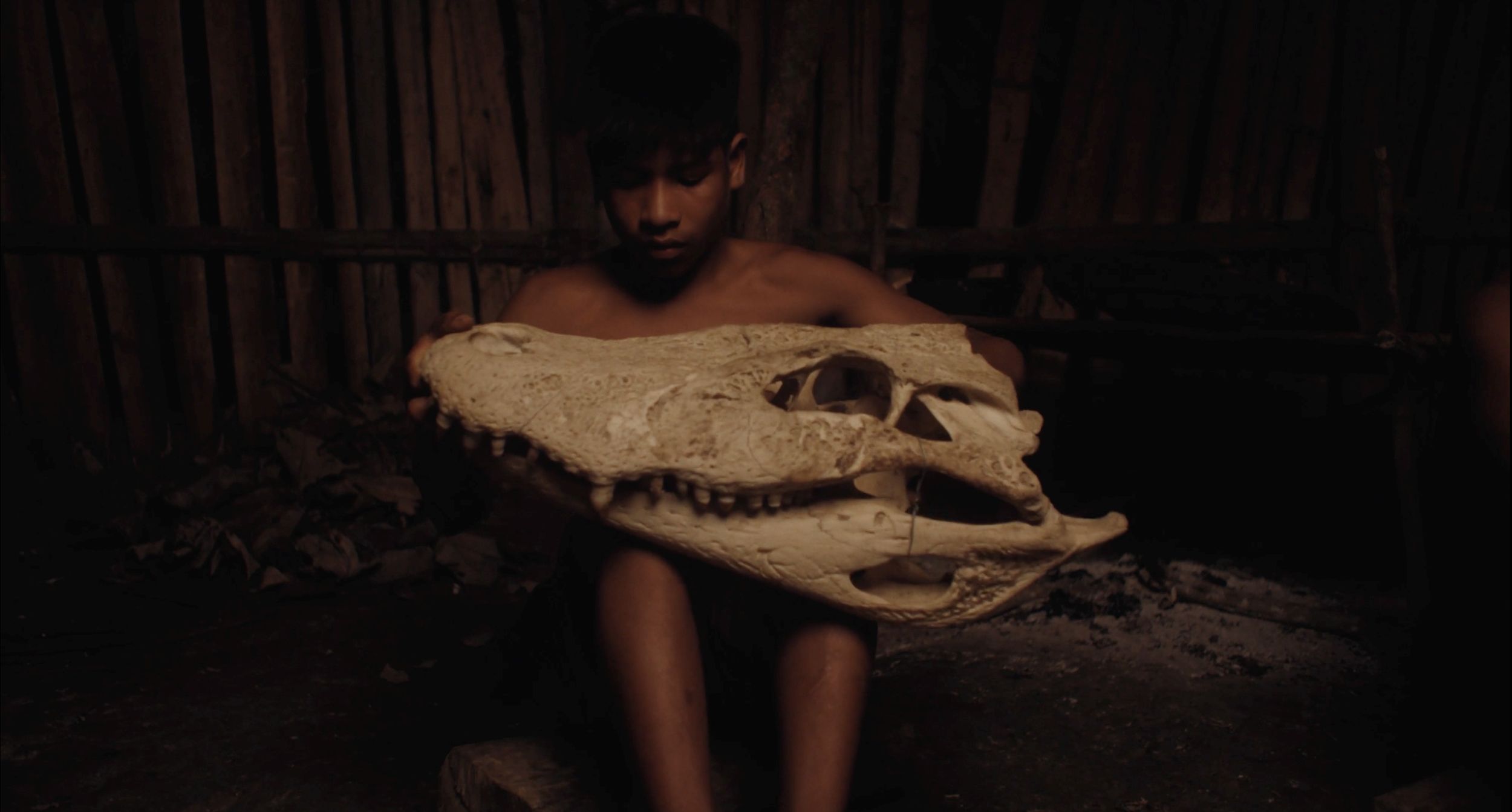To Imagine the End of the World
Ecologies of an Apocalypse Foretold
In the latest iteration of Concorto’s “Supernature” programme, images from the frontlines of environmental breakdown present strategies for living in its aftermath.

In a grim milestone for humanity, earlier this year, the Pacific island nation of Tuvalu opened the first ballot for a planned migration scheme to relocate the entirety of its population, 280 people at a time, to Australia over the next thirty years. As for the land, projected to be completely submerged by the end of this century, the country is in the process of creating a virtual twin to ensure continuity as the first digital nation. There are inescapable contradictions in this solution, whether in seeking asylum from carbon-fuelled collapse in the hum of a server farm, or entrusting a new basis for sovereignty in a landscape of tech-oligarchy. However, the stark choices facing Tuvalu underscore the fact that, as much as global heating constitutes a threat to all living beings on this earth, for some the climate apocalypse is already here, and imagining life in its wake an already urgent necessity.
Like spacetime, apocalyptic time is not uniform—gravity distorts the landscape, and some regions are already sinking under its weight. How to continue as a people when ways of life are made unviable? What solutions can be generated when ecological futurelessness has arrived in the present? Extinction haunts the films collected in “Supernature” at this year’s Concorto, a recurring programme which examines the volatile entanglement of human-nature relations with a clear eye on planetary breakdown. On their own, each of these shorts serves as testimony and record of ways of life under threat or already upended, but considered in light of each other, what becomes striking is the differing temporal vantage points from which they view catastrophe. In other words, a more revealing mode of inquiry into the attitudes and solutions posed therein comes down to whether the prefix to their apocalypse might be pre-, peri-, or post-.
El Bon Auguri (2024) eases us into this timeline with a canary-in-the-coalmine, offering an intimate and textured record of the death of pastoral culture in the Collserola park overlooking Barcelona. Alongside images of periurban shepherding, in a ceremonial mode, we watch the hands of ecofeminist textile collective Tornen Les Esquelles at work. As they revive the traditional local practice of wool felting, a woman’s hushed voice intones about the history of the ritual stone of Collserola outside Barcelona, and the malignant effect on livestock as the city encroaches on this once sacred place.
One of the most densely populated cities in Europe, the steep southern slopes of the Collserola have historically formed a barrier to expansion. Such topology brings built and natural environments into dramatic encounter, and the contrast between urban and pastoral is perhaps sensed most acutely in the sonic landscape of the film. In the forest, its ASMR soundtrack features an orchestra of sheep bells, the rush of running water as it is absorbed and expressed by wool, the gentle friction of fingers as they lather felt. The camera then drifts over the boundary of the park and back to urban structures, as sounds of traffic intrude for a moment in a highly dissonant symphony of the city. Returning to the forest, hands are replaced with faces, and whispered legend with the quotidian conversation of women at work. Earlier described as a kidney or lung, covered in wool, the ritual stone is now red as raw steak. The metaphor is literalised, and collective labour breathes life into this vital organ of the forest.
This is a film of gestures, and though sensually rendered, in moments like the above it is sometimes unclear what we are to imagine is the sum of such gestures. As much as the attention to craft here presents a revival of tradition, the lasting feeling is one of elegy. This reflective quality holds the viewer at something of a distance for much of its duration, though there comes an instance of confrontation at the film’s close. Decked in the same red wool as the stone, the last shepherd of the Collserola faces the camera, and we are told that these are the final images of him herding sheep. While footage of loss is almost synonymous with environmental documentary, a work like El Bon Auguri clearly serves functions more artistic than activist, and so the image asks nothing so specific of us but to recognise it. The tension between art and action implicit in such image-making does, however, appear to be an underlying anxiety of the next film, Common Pear (2025), a hybrid work which nests real interviews with Slovenia’s Pituralka pear growers within a post-apocalyptic fiction narrative.
In documentary sections, we learn that the viability of this genus of fruit tree—native to the country—has been decimated by unseasonal weather as climate change shifts old patterns. All of these 16mm portraits are dignified and humane, though the second subject we encounter, Jerneja, is the most memorable. The first thing we learn about her is an act of rebellion against modernity. Mischievously matter-of-fact, she recounts secretly moving the markers for a proposed telephone line in order to save a Pituralka tree growing on her land from being cut down. This real-world footage is bookended and threaded through a futuristic narrative in which a scientist pores over its meaning, attempting to understand the emotional source for their persistence in the face of ecological cataclysm.
Her theory proposes imagination as a strategy of survival, and in this timeline she is aided by an expanded cinema which can broadcast the emotions of these subjects directly to the audience. In the final scene, we watch an audience encountering these images in a dark room, insulated from the toxic yellow haze outside, attentive and sedate. A shift occurs as the film-within-the-film shows Jerneja talking about her rebellious deed with the telephone pole. Her voice recedes, synths swell, and the screening room is bathed in a spectrum of flickering lights. The timing of this spectacle suggests that what has been lost is not the specific knowledge and practice of cultivation, but the will to refuse, to persist in a world which deems you obsolete.

© Common Pear (Gregor Božič, 2025)
It feels intentional that Common Pear reflects back our own enchantment in front of the screen, and as festivals increasingly grapple with the responsibility of film exhibition in a disintegrating world system, this miraculous dispositif carries a reassuring message about the power of communal spectatorship in forming active subjectivities. If this utopian vision risks flattering its audience—gathered as we are for another programme on the climate catastrophe while the world burns outside—it is soon tempered by Memories of an Unborn Sun (2024), an altogether more dystopian piece which claims no such easy victories. The most expansive work exhibited in this strand, this film surveys ecologies of energy extraction in the Sahara, specifically ex-French territories such as Algeria, where this film is set. In a wide-ranging hybrid mode which blends documentary, archive, poetry, and science-fiction, it traces a line from the poisonous legacy of underground nuclear testing at In Eker to the present day exploitation of Chinese workers in the construction of solar power projects.
Memories of an Unborn Sun opens with viral footage purporting to show China launching an artificial sun into the sky. Symbolising the capitalist dream of infinite growth, director Marcel Mrejen takes this as a starting point to explore the human cost of energetic economies in a colonial and neo-colonial context. Testimony from migrant construction workers speaks of an unforgiving workday rhythm that leaves no time for leisure. By contrast, archival footage from the French military depicts the same location as a “luxury beach” in the 1960s, with French workers reclining on sun loungers and swimming in an erected pool. In perverse colonial fashion, the indigenous Tuareg captured here are described as the “odd fellows” in their own landscape. Eventually, these historic images reveal their true purpose: a mountain trembles violently, obscured in dust and vapour as it struggles to contain an atomic bomb detonated deep within.
The dreamlike logic that connects these disparate conversations is accentuated by a distinctively surreal cinematographic language. The Saharan landscape is surveilled from above, streaked with tire tracks and littered with the detritus of abandoned or unfinished projects. A colour palette of sickly yellows and corrosive orange dominates; there are queasy Dutch angles and distortions caused by desert heat and a fish-eye lens. Shapeshifting from testimony to a more speculative mode of storytelling, we once more enter the genre of science fiction and post-apocalypse, culminating in an excoriating atomic vision from Tuareg poet Hawad. Swallowed by a furious and radiant sandstorm, a worker wanders blindly through the haze while Hawad extols the toxic inheritance of the Sahara, owing not only to historic nuclear testing but to the ongoing Uranium extraction which powers French reactors in the present day:
“The sky’s burning peels / descend from the void / and dig bedsores / cancers gangrene galleries / prostrating in search of the living mineral”
Hawad’s poetry speaks of an apocalypse already passed—the irradiated homelands of the Tuareg not only poisoned but sliced up and scattered across five new nations as Europe retreated from the continent in governance, but never from its resources. The final line underscores the impossibility within which they must find a way to continue living as a people:
“How long are we going to exist without a present/ torn between yesterday and tomorrow?”
A question—an accusation—in the nightmare of this temporal rupture, its pessimism calls to mind a popular translation of Antonio Gramsci on the stakes of the revolutionary openings: the old world is dying, and the new world struggles to be born; now is the time of monsters.
The more accurate translation of Gramsci’s diagnosis refers not to monsters, but “a great variety of morbid symptoms” in the interregnum, and Who Loves the Sun (2024) shows us another people navigating this time of morbid symptoms between old systems and new orders. A dispatch from the North of Syria, the starting point of this short is the spectacular nature of improvised oil refineries, set up in the wake of the collapse of the official industry due to the pressures of war. Acrid fumes billow into the sky, draw a picture of the wind, cast shadows on the plains and at times fully saturate the frame. It becomes hard to orient ourselves in this landscape in which smoke is the defining architectural feature, a kinetic sculpture of contamination.
As apocalyptic as the scene appears, this remains a place of life, quotidian for those who work there. Scorched tankers appear dyspeptic as they belch out the solidified byproducts of this process, before the human workers inside make themselves known by squeezing themselves out from inside. A man smokes a cigarette just metres from this inferno, unfazed by this volcanic landscape which seems to threaten him from all sides. The makeshift nature of this extractive practice makes it dangerous and unsustainable but it is borne of survival, providing both fuel and employment in a region with few alternative options. This is felt as the film shifts from a focus on the polluting force of the industry to the social relations it sustains. The man we follow teaches his daughter about occupational hazards, explains the products of this process, and sells tankfuls of benzine to motorcyclists. In the final scene, the protagonist rides through town, his headlights cutting a path through the night and briefly illuminating figures in movement. It’s an ambivalent image, but one which speaks rather literally to the message of the film: even engulfed in darkness, life must continue.

© Lanawaru (Angello Faccini Rueda, 2024)
The final short in this programme, Lanawaru (2024), depicts an indigenous community in the Colombian Amazon as they respond to the disappearance of one of their own. What plot can be found here is very much secondary to atmosphere, as the camera makes skillful use of light and shadow to capture practice and ritual: the smoke which “arranges the world”; body paint which protects from the unseen; the rendering of mambe powder from coca leaf as an offering to the forest. Counterweighted by El Bon Auguri, such images serve to bookend this strand with a reverence for the ceremonial and the artisanal. Rather than presenting a linear narrative, Lanawaru is a project of rendering visible a cosmological inheritance, one with a vital role in conserving the ecosystem otherwise known as the lungs of the earth.
A little further south along the Andes, Aymara and Quechua cosmology offers the term pachakuti—the world overturned—which some social movements have used to describe the catastrophe of colonisation. The ways these practices and concepts symbolically arrange the world shows that, for many indigenous to the continent, the apocalypse is seen as something long since occurred. Having already lived through one man-made apocalypse, the Amazonian guardians of Lanawaru find themselves the first line of defense against another, as the unspoken spectre of deforestation and its attendant violence looms over the film.
In the strongest moments of this programme, these films gesture precisely towards the strategies we might learn from those on the frontlines of our collapsing economic, political, and ecological systems. Returning here to the poetry of Hawad, Jill Harvis argues that his writing embodies the force of a “radical futurelessness”, that the bitter knowledge it transmits disrupts teleological conceptions of time moving towards a brighter future. There can be a necessary clarity in the pessimism of ecological futurelessness, which can foment valuable forms of solidarity as utopian solutions are abandoned in search of ones that recognise the gravity of the limitations we are facing. Like the cyclical nature of Pachakuti, which contains within it the possibility of revolution and reordering, it is only in seeing the apocalypse that is already here that we might hope to make order from the chaos. Torn between yesterday and tomorrow, the best of these shorts examine the life that persists in that rupture.
